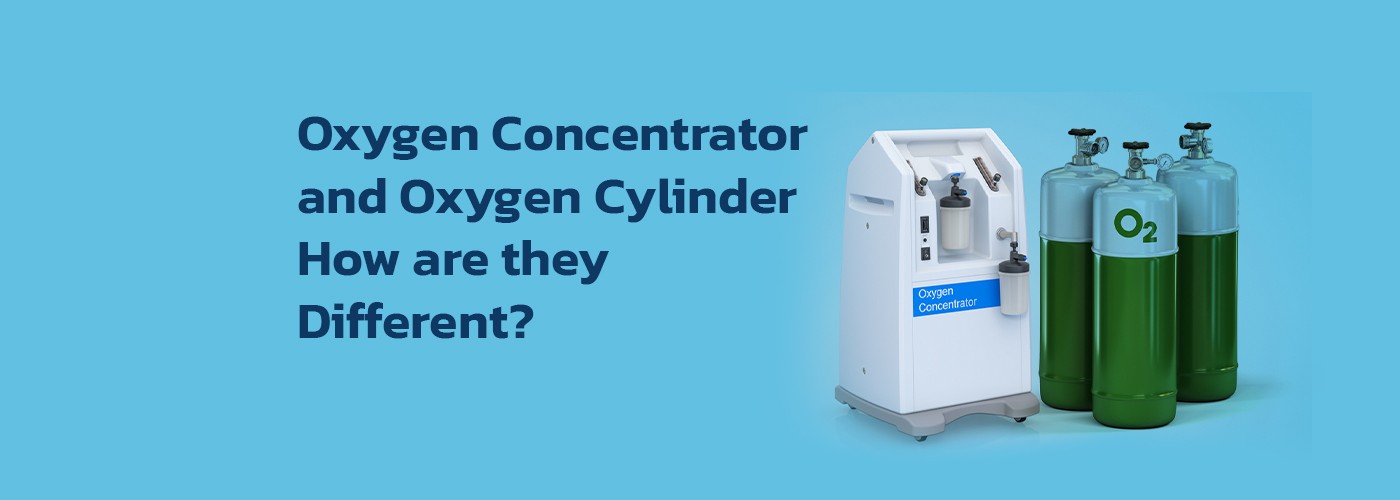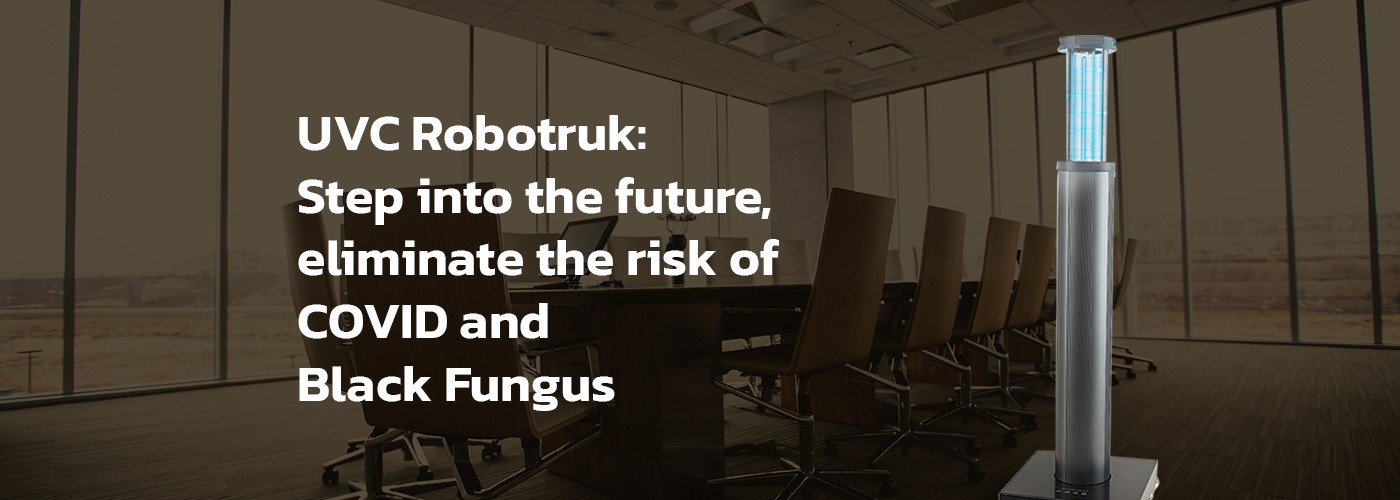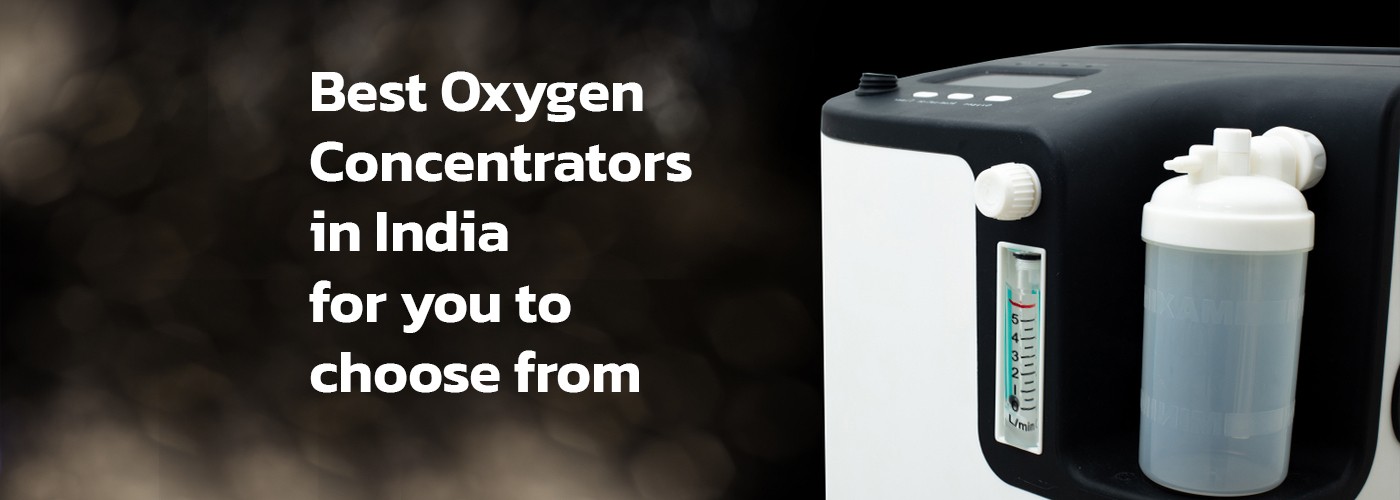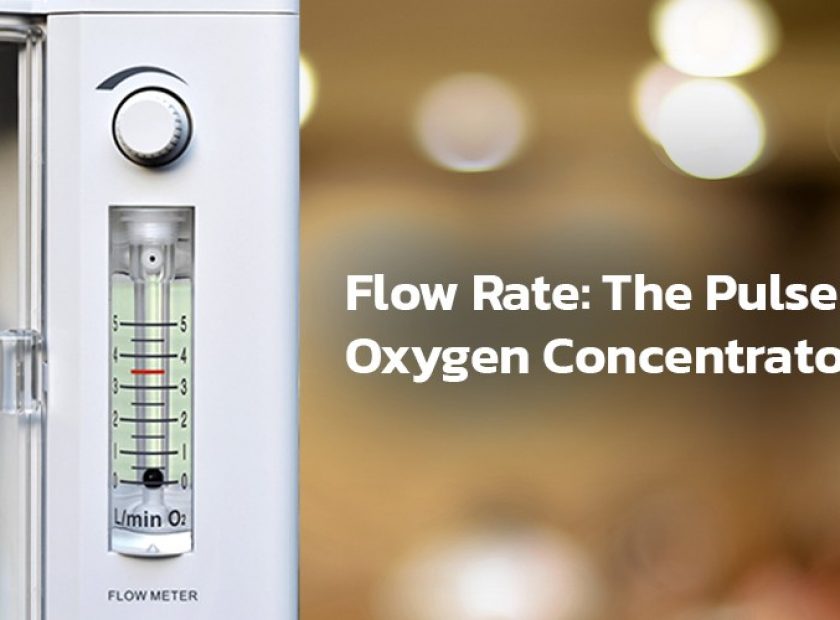Oxygen Concentrator and Oxygen Cylinder How Are They Different?

Is it more important for me to rely on a battery-life oxygen supply or oxygen concentrator? What is the best unit size for me? Do I want a big cylinder in the house or a small concentrator that I can pass around?
These are often the questions one finds oneself in while scouting for an appropriate oxygen support machine. But the task is easier said than done. However, we can help you make smart choices by dissecting through these two machines and making it easier for you to choose from. So, read on and grow smarter!
Both oxygen cylinders and oxygen concentrators are used to provide oxygen to patients who need it. However, the distribution mechanisms are vastly different. Oxygen Cylinders are more common in India, but Oxygen Concentrators are becoming increasingly popular among doctors and patients.
The biggest distinction is about how oxygen is delivered. Oxygen Cylinders have a finite amount of compressed oxygen that the consumer inhales before it runs out. Oxygen Concentrators filter and produce medical-grade oxygen offering an uninterrupted supply as long as the battery that drives the device is still alive.
On the contrary, patients with low oxygen levels in their blood will use an oxygen concentrator to purify the air and make it accessible to them. Cylinders do the same thing, except the oxygen in the tank is already compressed. The tank’s stock is steadily depleted until it runs out and must be refilled or replaced. Another key difference is that continuous Flow oxygen is delivered by all oxygen cylinders. It varies by system with oxygen concentrators, as some of the more compact options use pulse-dose delivery.
Unlike oxygen cylinders, which can run out of oxygen, an oxygen concentrator can never run out of oxygen as long as there is air and electricity. An oxygen concentrator removes oxygen from the air itself, allowing for an unrestricted and convenient supply.
A leaking oxygen cylinder raises the prospect of a fire, as does oxygen-saturated air. If a fire starts under these conditions, it will be more difficult to put out because oxygen-induced fires burn hotter than many other types of fires. Pulse-dose oxygen concentrators produce oxygen only when it is required, reducing the risk of leaks and thus flammability.
Spelling out the Pros and Cons of these two machines might give a deeper perspective:
Oxygen Tanks
Oxygen tanks hold pressurized oxygen that can be continuously released at predetermined flow rates to provide medical-grade oxygen to the patient. These devices are normally mounted on a rolling apparatus that allows them to be rolled alongside the patient, such as a small trolley or cart.
Pros
- There is no need for electricity. One of the most notable benefits of oxygen tanks is that they work by using the pressurized oxygen contained within them. Oxygen tanks can run without the use of a battery or an electrical outlet by releasing oxygen at one of many flow rate choices. This means that the tank will supply oxygen before the contents are exhausted.
- There are no beeps or noisy noises associated with using oxygen tanks since they simply distribute their contents at a set pace. This makes them suitable for use in quiet settings such as movie theatres or libraries, as well as for napping or being around those who need to be left alone, such as infants.
- Oxygen tanks are the most common form of personal oxygen, and as a result, they are frequently the most affordable, with the lowest initial cost of all the oxygen devices on the market. If the cost of the initial purchase is the most important factor, oxygen tanks are possibly the best option.
Cons
- The weight and portability of oxygen tanks are two of the most widely mentioned drawbacks. Although wheel-mounted cart systems, such as this one from Drive Medical, make rolling oxygen tanks simple and convenient, the tanks themselves are very large. Because of the device’s weight, raising the tank—for example, loading it into a truck or bringing it up a stairwell—can be difficult.
- Oxygen tanks have a finite amount of oxygen in them, and if they’re empty, they have to be refilled or replaced with a new tank. Once the tank’s oxygen supply has been exhausted, it must be refilled or replaced with a new tank.
- Since oxygen tanks must be refilled or replaced regularly, their low initial cost adds up over time, making the long-term cost higher.
Oxygen Concentrators
Oxygen concentrators use a filtering device to take ambient air from around the patient, compress it, and change it to medical-grade conditions, rather than the small amount of pressurized oxygen used for oxygen tanks. These devices come in a variety of sizes, including larger home-style versions as well as smaller compact models that are better for traveling and moving around.
Pros
- Since oxygen concentrators are able to constantly draw in and handle air, unlike oxygen tanks, they can never run out of oxygen. Customers also mention this as one of the best features of oxygen concentrators.
- Concentrators do not need a thick metal tank because they do not use pressurized oxygen. This means they’re a lot smaller and easier to transport than most oxygen tanks. For maximum convenience, many oxygen concentrators are built to be carried in a backpack or side case.
- Oxygen concentrators come in a variety of sizes, types, and designs, each built to meet the needs of a particular user group. While most oxygen tanks are similar, concentrators offer a wider range of options to ensure you get exactly what you need.
- Although oxygen tanks must be refilled or replaced on a regular basis, oxygen concentrators use ambient air and therefore do not need the same long-term maintenance as tanks. All of the costs of your concentrators will be included in your initial order.
Cons
- Since oxygen concentrators do not use pressurized oxygen in a tank, they must rely on battery or electric power to filter air and deliver oxygen. The available charge in the battery must be considered, as it is for any battery-powered unit. If the battery is not charged, it will run out of power and the concentrator will shut down before it is recharged.
- Oxygen concentrators draw oxygen from the air, filtering and compressing it for the consumer. Due to the various components at work, this method can be very noisy, and this is the most common complaint among concentrator users. While many newer concentrator models have been developed to minimize noise to almost undetectable levels, there is always still some sound associated with their workings.
- Oxygen concentrators are also very costly upfront due to the complicated processes at work. Despite the fact that, unlike oxygen tanks, this is a one-time purchase, many consumers will not be able to afford the high price tag all at once, even if it saves money in the long run.
Tips to Choose
- A concentrator or a tank will suffice if you’re looking for a nice, reliable oxygen therapy system to use in your home, hospital space, or other facility. On a mobile cart, oxygen tanks can quickly drive up and down the hallways of a home or hospital. However, if you plan to use your unit for travel, errands, or other more active work, an oxygen concentrator is a much better option, since it is lighter in weight and comes with a variety of carrying bags and cases.
- Oxygen tanks, in particular, come in a variety of sizes. Certain volumes may be better than others depending on the recommended oxygen flow rate and the length of time the tank will be used. Since oxygen concentrators have no fixed capacity, if you need a large amount of oxygen, a concentrator will save you money in the long run and will be more convenient for you because you won’t have to think about daily refills and tank replacements.
- When choosing an oxygen therapy system, as with any product, budget is an important factor to consider. Many people are drawn to the lower initial cost of oxygen cylinders, but it’s important to note that investing in a concentrator would save you money in the long run by eliminating the need for refills and tank replacements.
- Many oxygen tanks and concentrators provide transport accessories as an alternative. Wheel-mounted oxygen tanks, shoulder bags, and wheelchair attachments are examples. Depending on how you want to use your oxygen system, you may want to consider buying a device for holding and/or transporting it if you don’t already have one.
- There are a few other things to remember that may or may not be provided with your oxygen tank or concentrator. Oxygen tubing, nasal cannulas, and oxygen masks are all essential for proper oxygen therapy delivery, so if you don’t already have them, you may be interested in a product that contains them all in one package.
That’s basically all that you need to make an empowered and informed choice.




